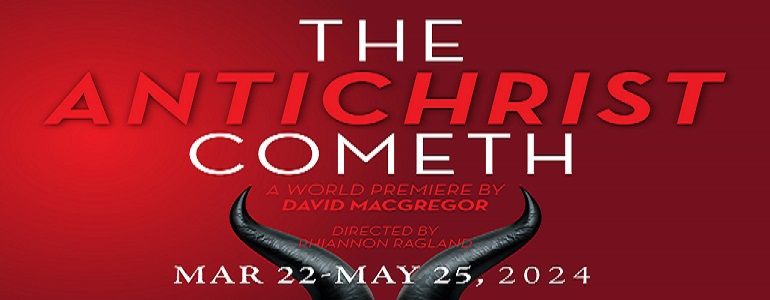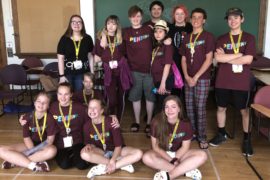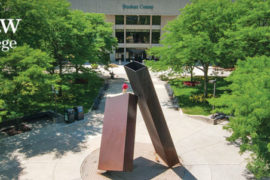An inspiring and innovative group of eighth-grade geometry students at Mill Creek created a “spark” this spring by tackling a real world problem – reducing the spread of illness in schools now and in the future.
The Dexter schools announced the creation of the “Spark” program, founded on the belief that “everyone has something valuable to contribute to society and our collective potential lies in nurturing our individuality.” The first phase of the Spark rollout was to pilot “Spark Experiences,” which gives participants the chance to experience teaching and learning in a learner-centered environment.
One such Spark Experience involved a group of middle school geometry students at Mill Creek who turned the opportunity into a applied math project.
“Instead of learning about 3-dimensional geometry through memorizing formulas and textbook problems, the students tackled the real world problem of how to best reduce the spread of illness in schools now and in the future,” says Mill Creek geometry teacher Melanie Dever. “They started investigating some simulations of airflow in a classroom, and brainstormed a long list of questions they had around the topic. As a group, they selected a question to research. They wanted to determine how often the air in their classroom was refreshed, and how that impacted the relative safety of the space.”
The students who participated in the project were Audrey Benson, Andrew Boydston, Phin Moazami, Conner Masterson, Addy Robke, Sarah Sawin, Grace Koch, Nick Sherman, Edward Badel, Santiago Mendez, Crystan (Jinxuan) Duan, Mieko Harding, Chloe VanNoord, Scott Smith and Lauren Hart.
ON WHY THE PROJECT WAS IMPORTANT
“Especially with COVID-19 affecting all of our lives, we wanted to see if our classroom and school is safe or not for students, and if it isn’t, how we would be able to improve it.” – Lauren Hart
“Even when COVID is over, studying the air flow in schools and adjusting it for the better would help prevent all illnesses as a whole. Even illnesses such as the flu or colds. Many students each year get sick from school so improving air flow could help with that tremendously. – Sarah Sawin As the students worked, Dever would guide them along by asking questions rather than giving answers. Questions such as, “If you want to know how often the air is exchanged, what do you need to know to figure that out?”
The students conducted research and had to make sense of it and apply what they had discovered.
THE PROS AND CONS OF DIFFERENT LEARNING STYLES
“It was a bit confusing at first because the project was very open ended, but in the end we got used to it. I liked it because it felt like the students were more in control of the project than the teacher, so even if it took us longer to figure things out, it was fine because we were going at our own pace.” – Chloe Van Noord
“With this different learning style we had more room to be creative and come up with our own ideas.” – Grace Koch
“I really liked this form of learning because it felt like there was a purpose to our work instead of just memorizing stuff and writing it on a test. We used what we learned throughout the year to solve a real world problem, and a problem many other schools had to deal with during this pandemic.” – Andrew Boydston
“I liked this style of learning and problem solving because it made it feel more real to be solving an actual problem that has a purpose rather than just solving some theoretical problem for a score.” – Nick Sherman
“It was very interesting working in this type of learning style since it is very different from the traditional type. There seems to be no ‘right’ answer and the learning part happens in the different strategies and resources we used to come to our conclusions.” – Crystal Duan
In the end, the students determined that the air flow in the classrooms was much better than what is recommended.
Instead of simply stopping when they had an answer to their question, they had to figure out a way to communicate their findings to the community.
“This led to thinking about who would need to know the information they’d found, and how best to communicate it,” says Dever. “They decided to make a mini-documentary about what they’d learned. Although they were under a time pressure as the school year came to an end, they worked collaboratively together to tell their story.
“Some of the remote-learning students collaborated with their in-person peers to analyze the school’s air flow. Other remote-learning students investigated the airflow in their own homes.”
HOW DID YOU FEEL ABOUT DEALING WITH A REAL WORLD SITUATION AND HOW WERE YOU CREATIVE IN FINDING A SOLUTION?
“It simulated a work environment which is quite useful. Working together on the problem, having to work through our disagreements as well as taking into account realistic conditions rather than a fake word problem. This gave us a better chance to solve it like we would in a job since it wasn’t perfectly planned out. It didn’t have a set answer or a certain way to get there. Because we worked on a real problem in the world, now we know how to make other schools safer.” – Audrey Benson
“It was fun because it feels useful. Like in a normal math problem, it sort of feels like we’re solving other fictional people’s problems without a point but with this, the solution could actually be used to improve the school.” – Chloe Van Noord
“Solving a problem about a real world situation gave purpose to the work we were doing, this made the work we were doing feel more beneficial.” – Grace Koch
“I thought it was a lot more fun and it actually felt useful. I felt like I was doing math for something that could actually be useful instead of just doing the math to get the math problem done.” – Sarah Sawin
“It felt more important than the other units we had done in the past, since the data and calculations we did were actually going to be impacting something, not just impacting our grade.” – Lauren Hart
“We found some measurements in ways that probably weren’t the expected way, such as opening the ceiling and measuring the circumference of the vents in order to find the surface area. We also used chairs and tables as standing locations.” – Nick Sherman
“For some of the online folks like me, who couldn’t come to school for the measurements, we used scale drawings to figure out the scale in pictures so we could find the estimated area & volume for things we never even saw in person! I think that is a pretty neat and creative way.” – Crystal Duan
A student-produced video detailing their findings and recommendations can be seen HERE








